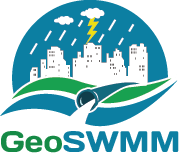Products|GeoSWMM
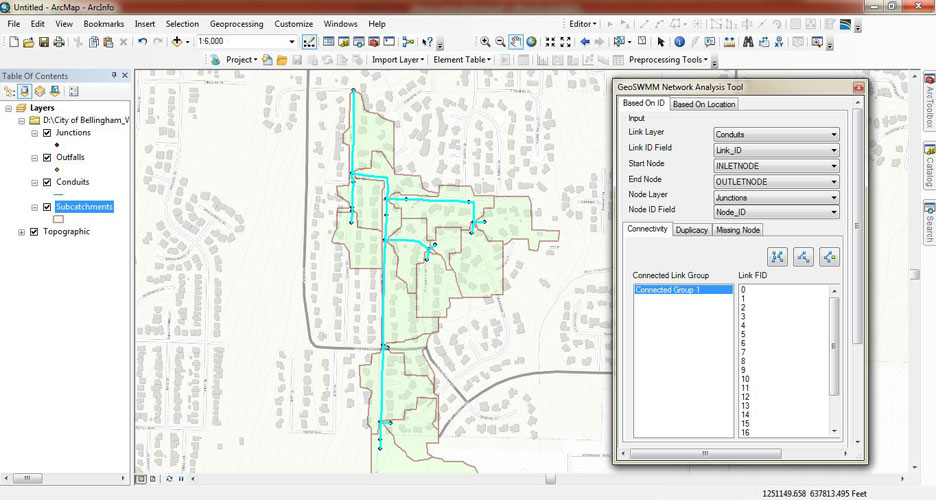
Network Analysis Tool
- Analyze network connectivity problems and displays the result in ArcMap
- Visually displays exactly where the issue exists
- Finds the connected components and shows how they are disconnected
- Shows where the links and nodes are missing
- Finds where the network is physically connected, but logically disconnected due to wrong data entry
- Shows where the same location have multiple nodes or links
- Finds out the nodes and links that have the same ids
- Finds out the unused nodes
- Find links and nodes with invalid geometry
Conduit Roughness
- Assign conduit roughness values based on conduit material
- Optionally assign roughness based on the combination of conduit cross section type and material
- Use SWMM reference table or external data file to assign suitable roughness
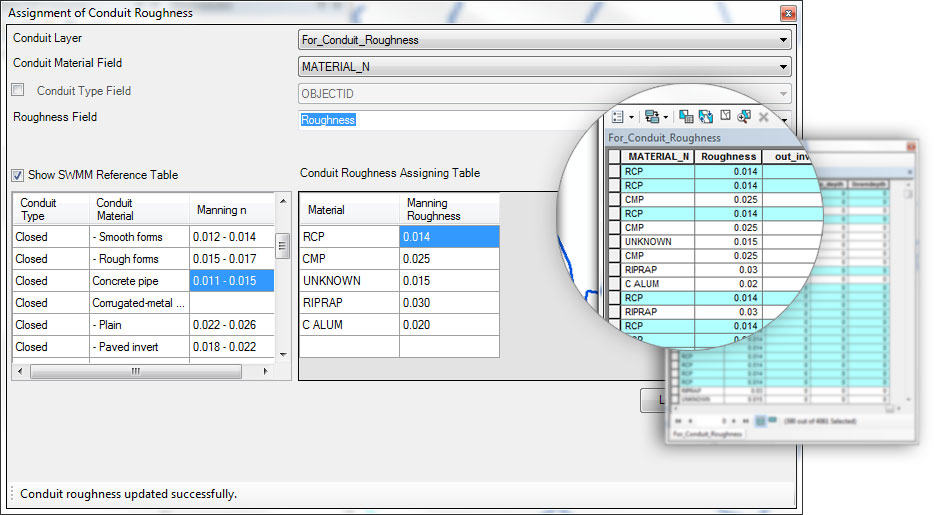

Width calculation
- Determines characteristic width of sub-watersheds for hydrologic analysis.
- Allows users to adjust effective channel length and overland flow path length during calculation, thereby makes better approximation of system characteristics.
- Allows users to quickly find the head-watersheds, and their longest flow path lengths from a DEM.
- Special length adjustment provisions are kept for head-watersheds. Users can adjust the parameter in a table.
- Use two most reliable width calculation methods to determine the width.
Slope Calculation
- Find average surface slope of model sub-catchments using DEM dataset
- Calculate slope as weighted average of the intersected raster cells
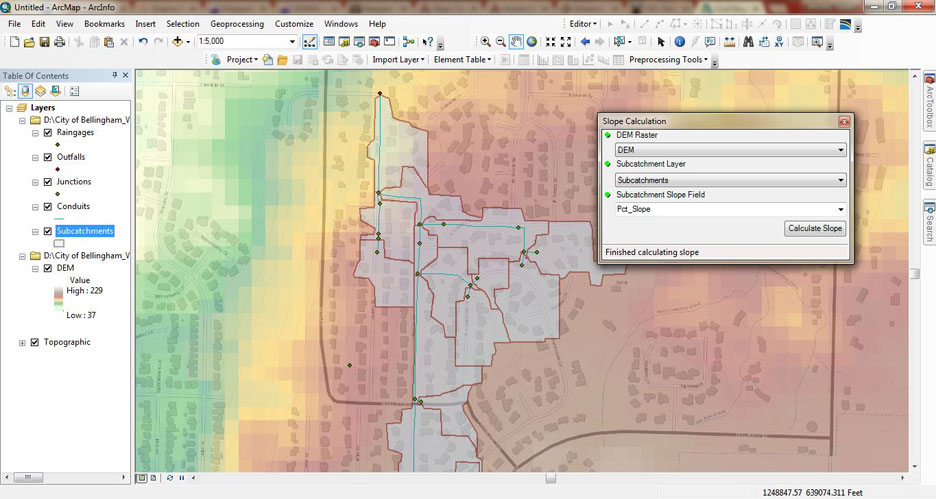
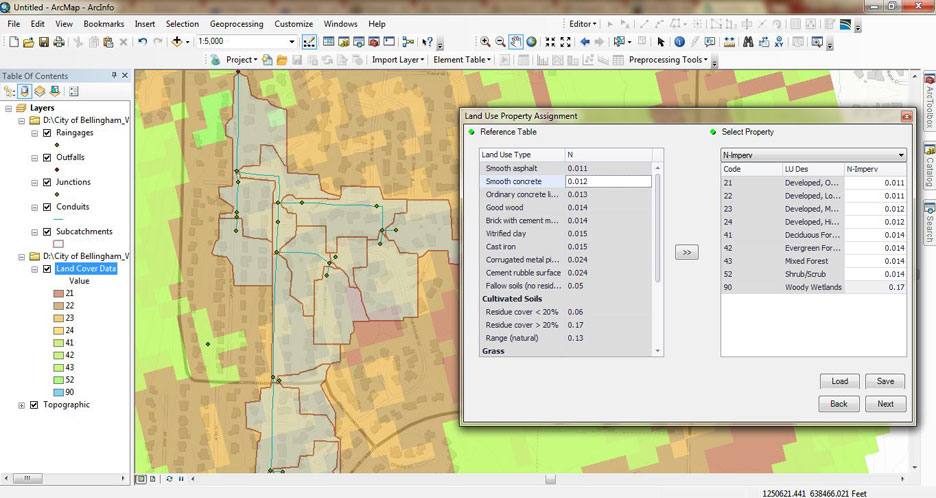
Land Use Property
- Comprehensive options to reclassify a reference land cover data (e.g. the USGS NLCD 2011 land cover data) to the simplified land use types for SWMM
- Assign suitable values for the Manning's N and the depth of the maximum depression storage for each land use type from reference table
- Load previous reclassification or save reclassification for later use
- Calculate N- and D- values for sub-catchments as weighted average of intersected land cover
Watershed Delineation Tool
- Delineates subwatershed boundaries for hydrologic analysis and simulation
- Allows automatic adjustment of raw DEM data for smooth processing of subwatershed delineation
- DEM raster clipping option to accurately specify the study area and accelerate delineation process
- Advanced stream-burning option allows to account for existing channel layout during delineation process
- Create and manage stream layer for the delineated subwatersheds
- Specify and manage outlet locations at stream confluences, using existing layer or by manual digitization
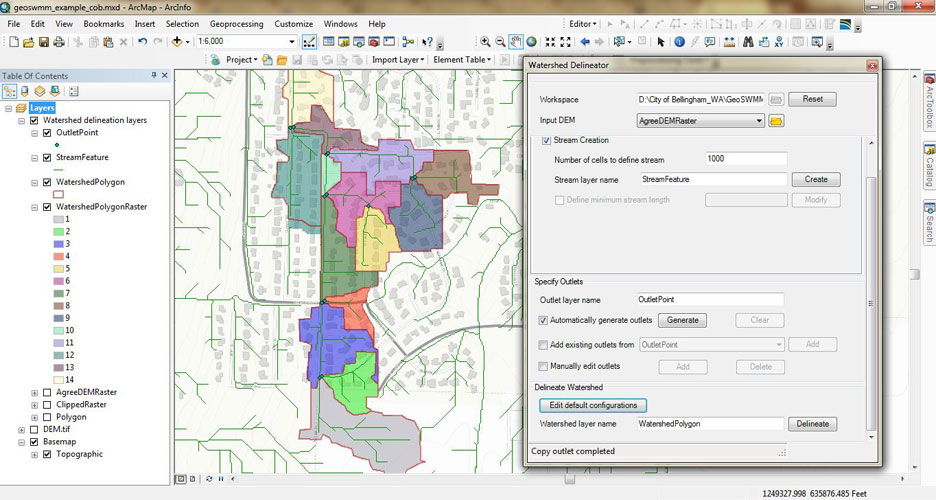
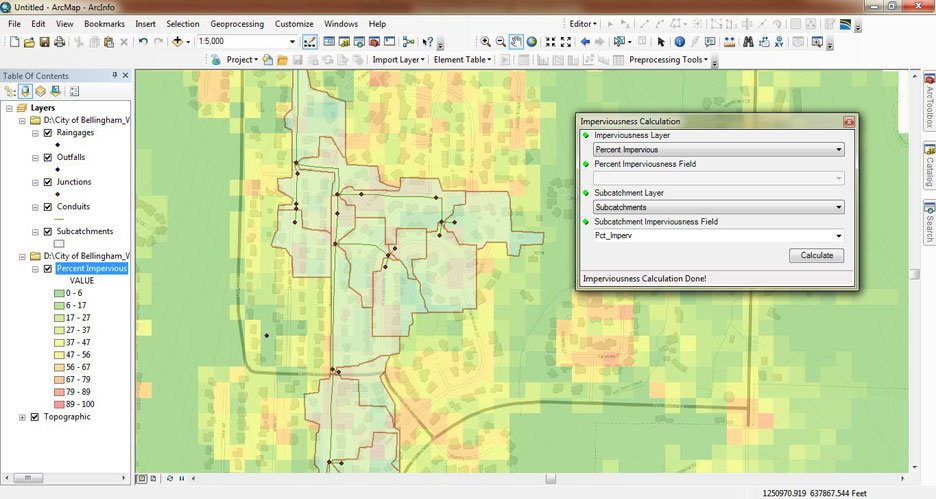
Imperviousness
- Find the area-weighted average surface imperviousness of subcatchments
- Raster or polygon feature can use to find surface imperviousness
Model Creation From Existing GIS Data
- Efficiently design a complete model
- Drag-drop GIS Layer data into model
- Extracts model information directly from the external GIS data source and assigns them perfectly to the model components.
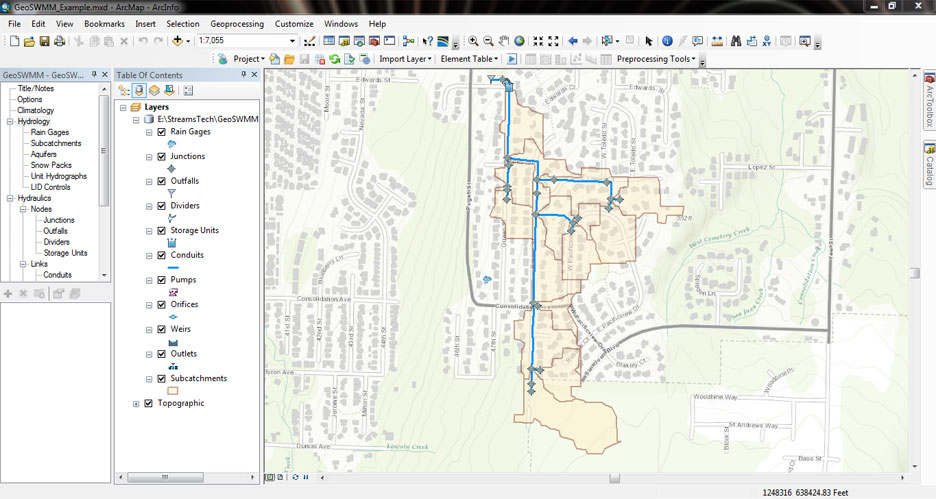

Automatic calculation of geometrical properties of model elements
- Populate sub-catchment area and conduit length automatically from gis.
- Use user defined area or length for model adjustments.
- Run the model using automatically calculated values or user defined values according to modeler’s preference.
Input File to Model And Export Model to .inp File
- EPASWMM standard .inp file export
- Build model from existing .inp file
- Data validation with projection system checking during model creation

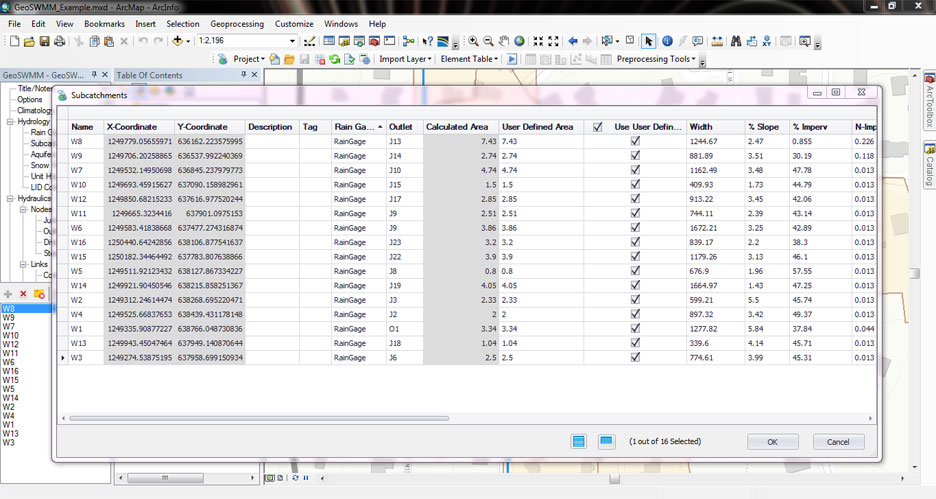
Tabular view of model data
- View all the model elements of one category in table
- Easily update model data using the tabular view
- Both simple and composite data for each element can be updated from tabular view.
Control Rules Editor
- Avoid error in defining control rules using self guided rule editor
- Create control rules simply by clicking and entering some values in suitable fields
- Validate control rules even before leaving the editor
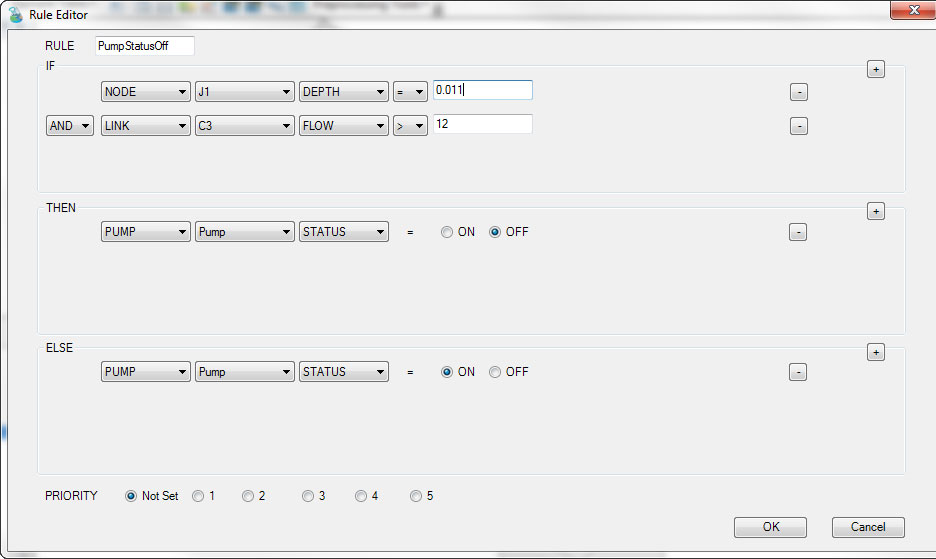
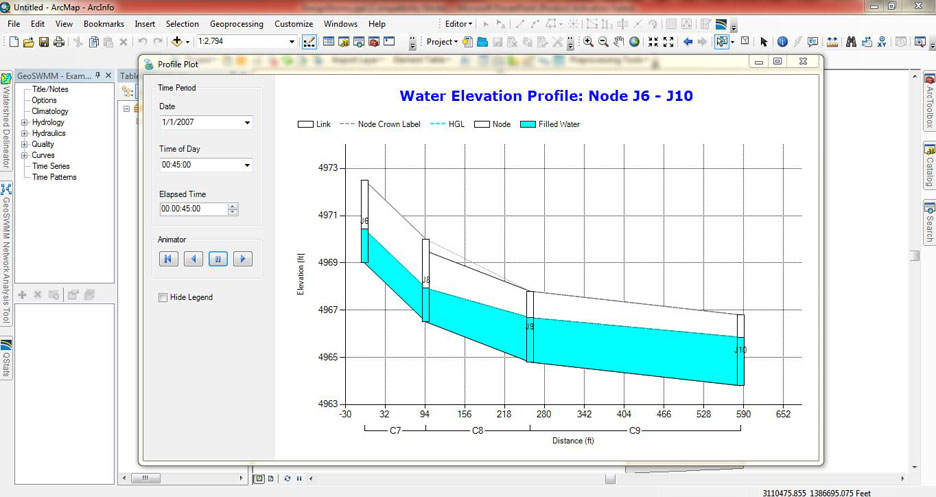
View Profile Plot
- View all available paths between a start node and end node.
- Generate water surface elevation profiles along with the links for desired path.
- Run simulation of the surface elevation based on predefined time length.
- Simulation can be paused, forwarded and rewound.
View Time Series Comparison
- Time Series Comparison illustrating the comparison between a pair of variables, e.g. flow rate in a pipe vs. water depth at a node with respect to time.
- Fast and accurate system modeling, analysis and design for visual comparison of input time series and results.
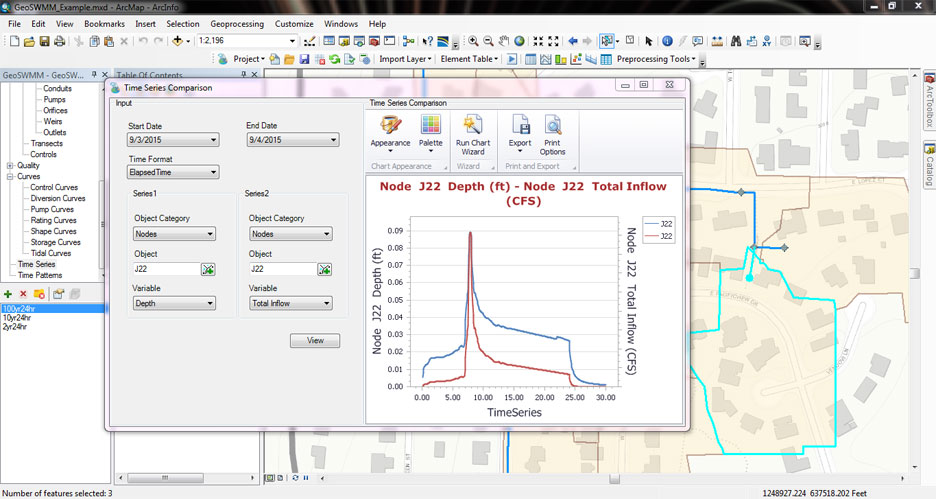
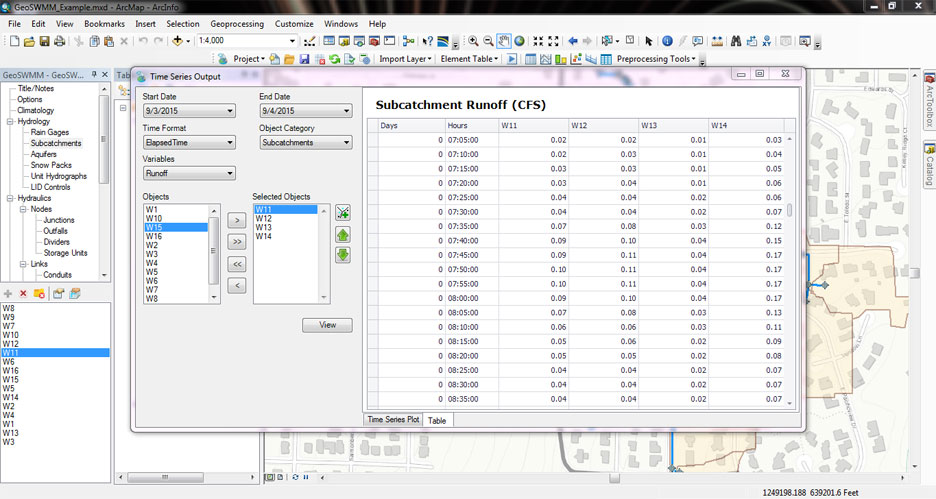
View Output Result in Table Format
- Enables to list and view time series output results of a single object in a table.
- Table data exportable to .csv format
